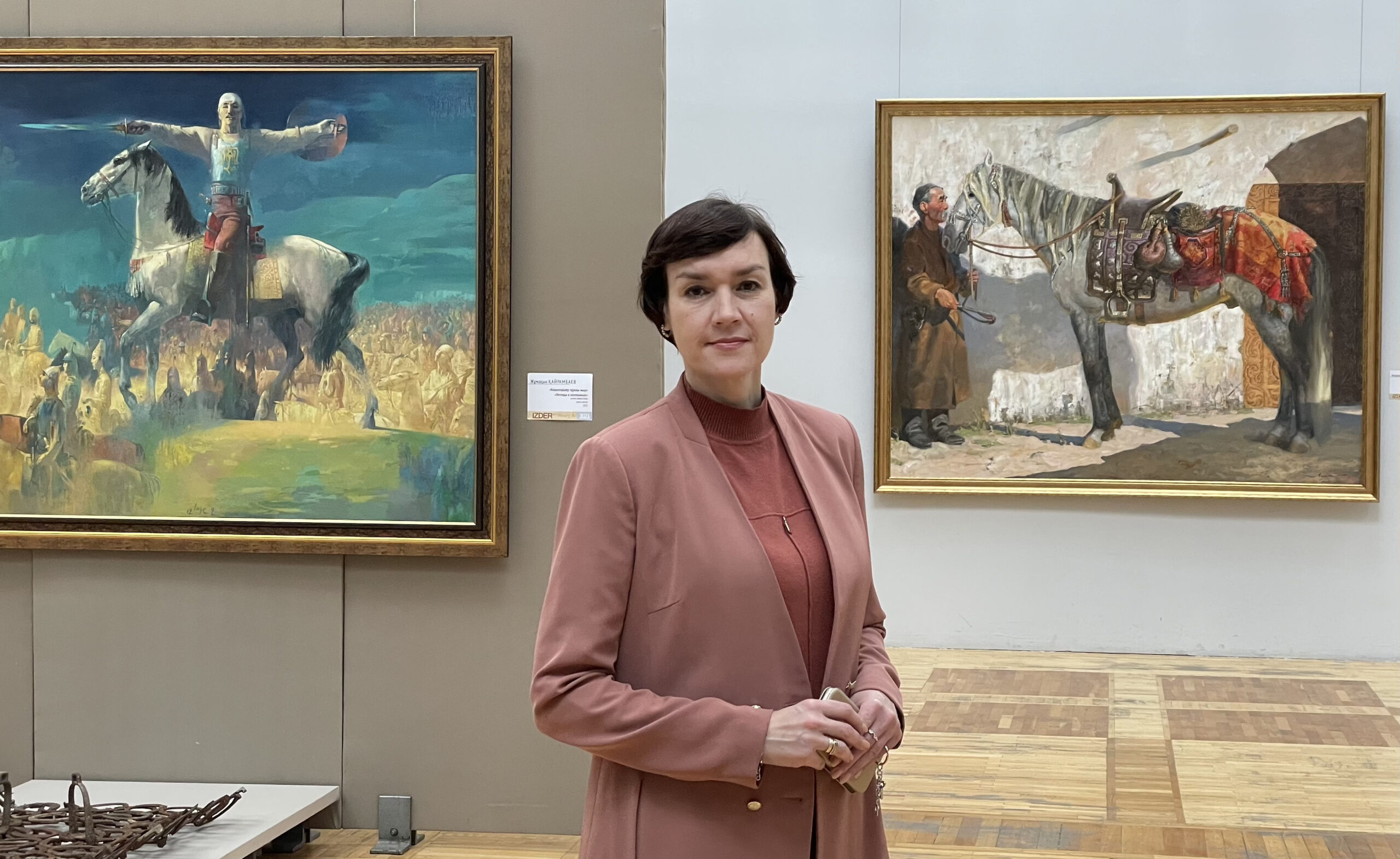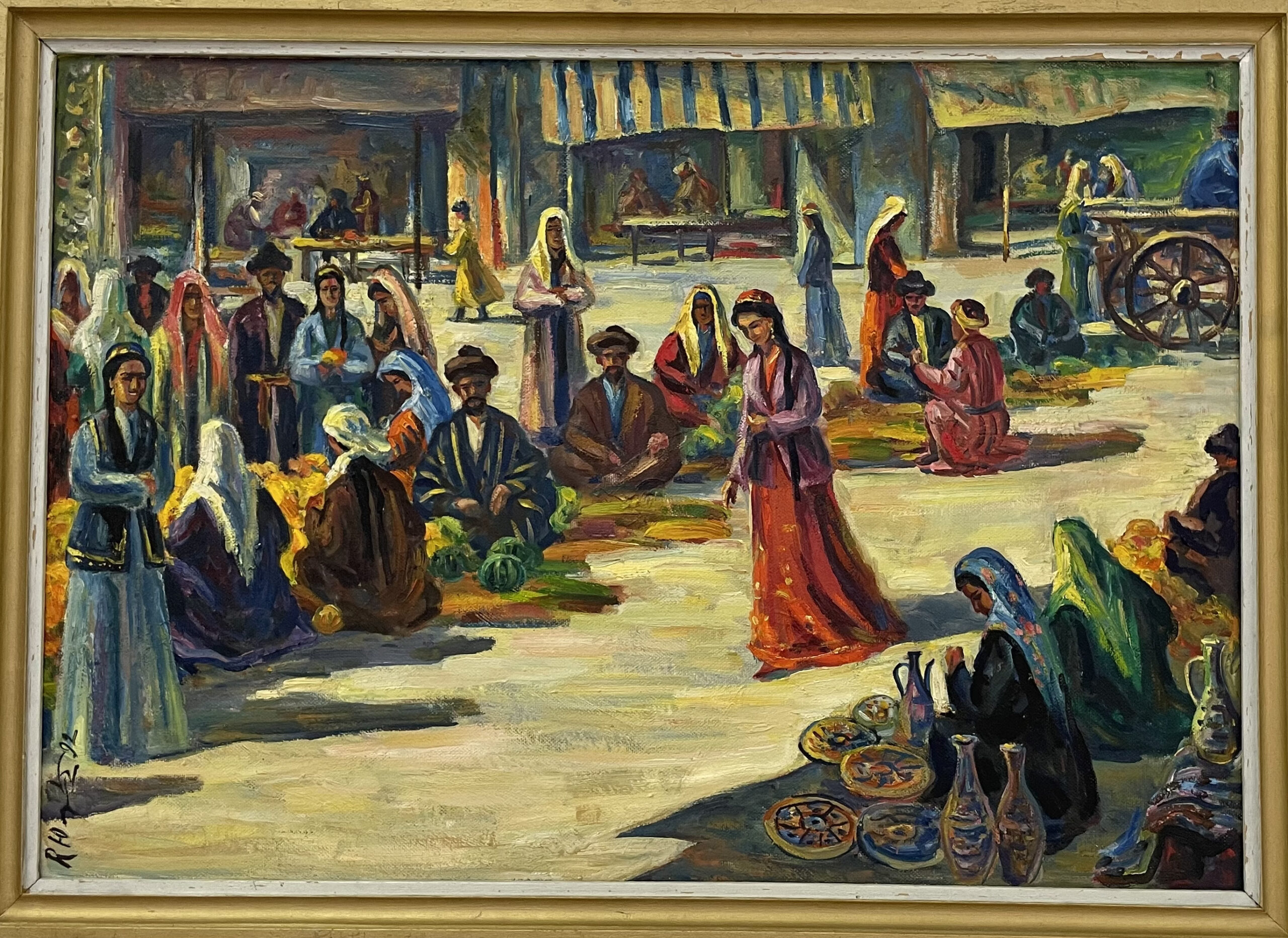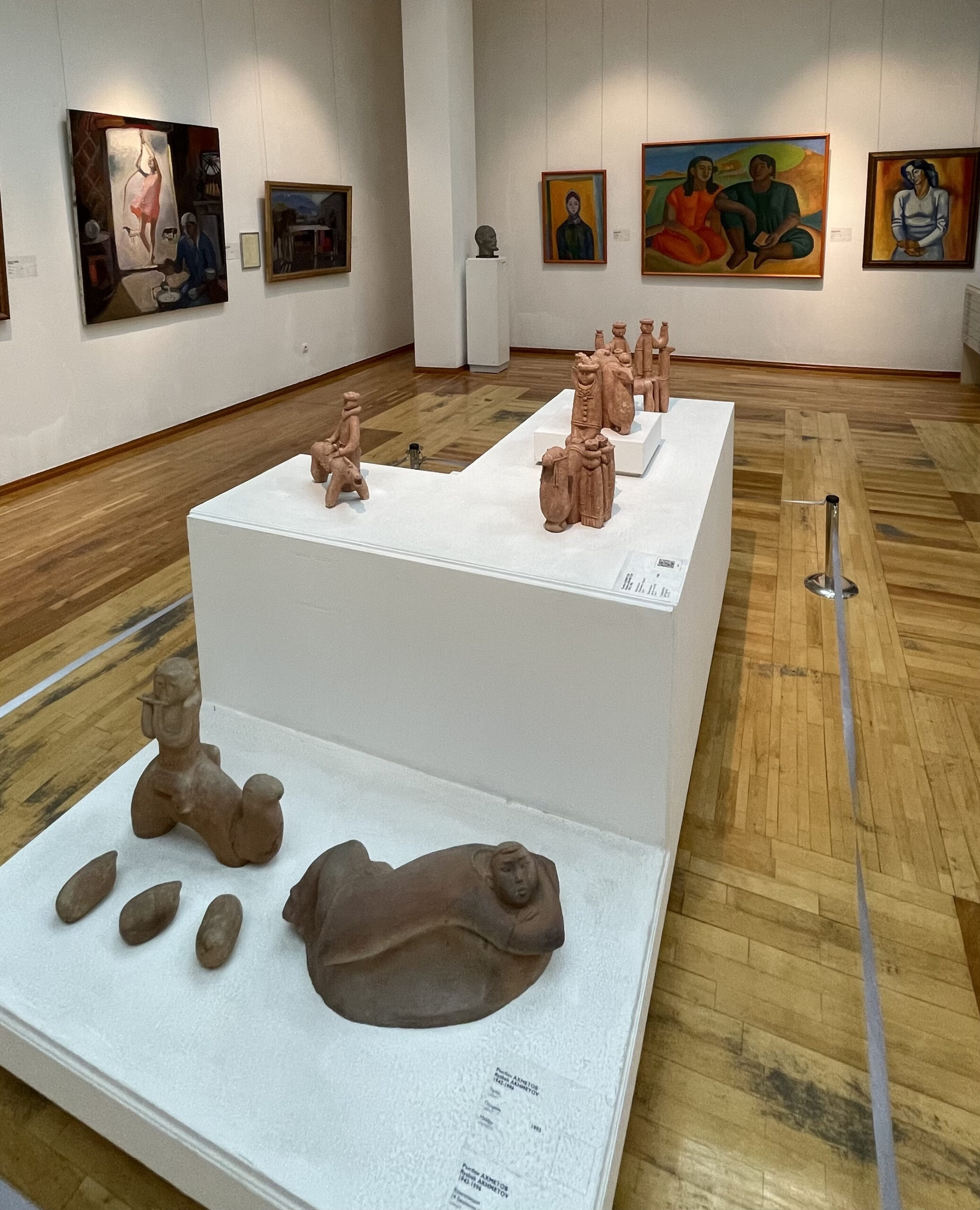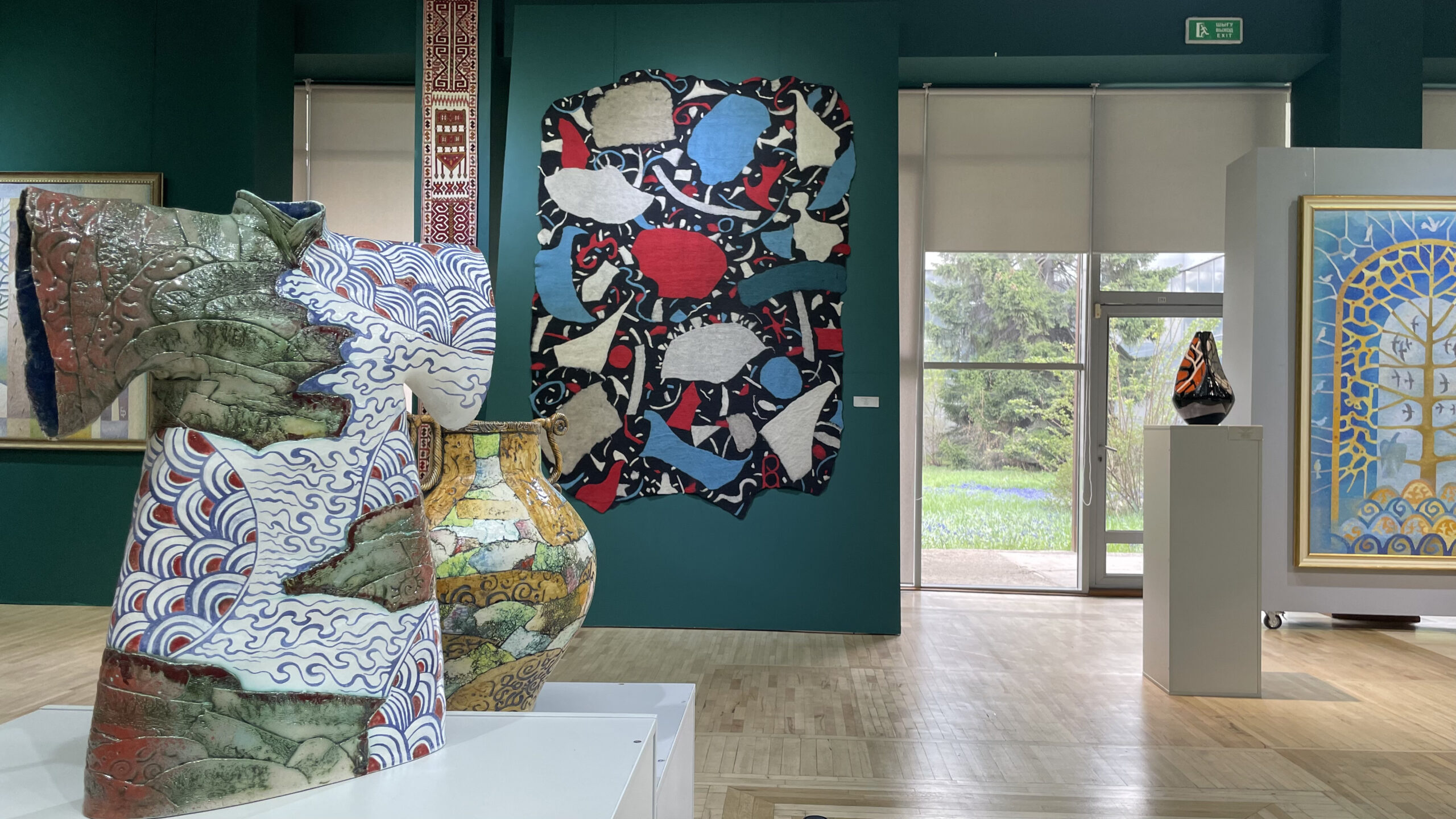ASTANA – Almaty-based Kasteyev State Museum of Arts is one of the largest art museums in Kazakhstan and is named after renowned Kazakh artist Abilkhan Kasteyev. It plays a vital role in preserving and promoting Kazakh cultural heritage.

Katerina Reznikova. Photo credit: The Astana Times.
Museum’s Scientific Secretary Katerina Reznikova spoke to the Astana Times about the venue’s main features, including exhibitions that showcase both Kazakh traditional art forms and contemporary and experimental works.
The museum’s collection includes around 26,000 exhibits, including paintings, sculptures, ceramics and textiles.
According to Reznikova, the museum is positioned as the country’s foremost and most expensive artistic assemblage, garnering recognition as a premier institution within Central Asia.
“The overall exhibition is notably categorized into two principal types: temporary exhibitions that highlight a specific theme with definite duration, and a permanent exhibition that showcases the museum’s funds. It selectively displays a subset of the collection, adhering to the principle of presenting the finest pieces, ensuring broad accessibility,” she said.

On the high-mountain skating rink. A painting created by Abylkhan Kasteyev in 1955. Photo credit: The Astana Times.
The museum’s building is an architectural masterpiece designed in a modernist style. It houses several exhibition halls as well as educational and research spaces. The first hall, a unique space beneath a pyramid-shaped roof with a square base, offers viewers an entry point into the museum’s realm.
“A collection of ancient traditional decorative and applied arts is presented within this hall. These artifacts, once integral to the interiors of Kazakh yurts, accompanied the daily lives of the nomads. The ornamental motifs etched into these artifacts reflect the worldviews, philosophies, beliefs, and core tenets of the nomadic civilization that has inhabited the Kazakh region since antiquity,” she said.
Reznikova emphasized that the museum’s comprehensive exhibition, encompassing diverse thematic divisions and presenting Russian, European and the East art collections, often earns the distinction of an encyclopedic-style museum. Through these collections, individuals can acquaint themselves with Kazakh art and the global tapestry of artistic culture.
The subsequent hall showcases contemporary applied art, seamlessly continuing from the preceding one. This section spotlights works by modern artists specializing in decorative and applied art techniques.

Photo credit: The Astana Times.
“Here, visitors can see tapestries, unique ceramics, and felt compositions. Works by Zeynelkhan Mukhamedzhan are particularly striking, as they are crafted using the keste technique, a traditional crochet embroidery method once deemed lost,” said Reznikova.
The central part of the museum presents highly unique installations. At the upper part of the hall, just under the ceiling, a genuine shanyrak (the upper part of a yurt) is suspended, adorned with baskur (patterned woven braid) motifs, effectively simulating the upper section of a yurt.
“Shanyrak showcases the sacred symbol of Kazakh nomadic culture holding numerous beliefs and significance. Kazakhs say ‘May your shanyrak be high’ conveying wishes for happiness, prosperity, and well-being in one’s home,” Reznikova said.
“This section primarily highlights works by contemporary Kazakh artists, including a family duo of Saule and Alibay Bapanovs that crafts textured compositions using leather as their primary material. These artists have developed distinct styles and trends, gaining demand not only in Kazakhstan but also internationally,” she noted.
Reznikova also showed a remarkable book featuring 100 of the museum’s collection masterpieces. It is divided into three main sections: painting, graphics, and sculpture. Annotations in three languages accompany each work.
“Beyond original painted pieces, the collection includes a captivating example of digital art – animated replicas of selected works. At certain moments, these replicas come to life, often surprising viewers,” she said.
The museum stands out as an innovator amidst numerous initiatives. It became one of the first museums in Kazakhstan to undertake extensive work in digitizing its collection, mainly focusing on digitizing the sculpture holdings.

Photo credit: The Astana Times.
“While a painting is a two-dimensional image and often requires only a high-quality photograph to be adequately presented, sculpture demands multi-angle photography to capture its full essence,” she said.
The museum digitized the entire core sculpture collection through a specific method where a camera circles the sculpture, creating images from various angles. This technique lets viewers rotate the picture and see the statue from several perspectives.
“We have integrated this feature into our website under the name of the 3D Gallery. Visitors can interact with the sculptures by clicking on them, rotating, zooming in, and observing them from different angles. The essence of this form of art lies in its volumetric nature,” she said.
Reznikova also mentioned that the museum was among the first to implement inclusive projects. The museum introduces tactile exhibits specifically designed for visually impaired and blind visitors.
“These tactile exhibits feature relief sculptures mirroring the themes of the original artworks. They are placed in close proximity to the original paintings, allowing visitors to feel the details with their fingertips,” she said.
Alongside each exhibit, a Braille-text annotation offers informative access to visitors with special needs. Such exhibits familiarize visitors with different materials like wool, felt, leather, and wood.
“We also present compositions showcasing Kazakh ornaments with raised reliefs that can be touched to experience their structure. I consider this an important and innovative method of fostering engagement within Kazakhstan’s museum community,” said Reznikova.
The Angel’s Footprint exhibition received significant attention from visitors. It united artists across generations, each of whom is a disciple of the eminent Kazakh painter Zhumakyn Kairambayev.

Photo credit: The Astana Times.
“This title alludes to the traditional Kazakh term for a horse’s hoof print on the ground. The artists chose to delve into the concept of the sacred horse in nomadic civilization, a symbol profoundly intertwined with Kazakh nomads’ lives. Horses served as transportation, draft animals, and even sustenance, forming an integral part of the culture,” she said.
Kairambayev is an exceptional painter who remarkably balances his creative pursuits with a lengthy teaching career spanning 43 years.
“The participants in this exhibition encompassed a wide age range, from mature artists with well-established styles to young painters in the early stages of defining their artistic language,” said Reznikova.
In tandem with painting and sculpture, the exhibition encompassed items of equestrian equipment drawn from the museum collection.
“These artifacts amplified and emphasized the conceptual portrayal of the horse as a mythical and sacred entity, infused with spiritual and elevated attributes,” she said.

